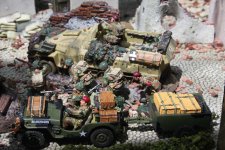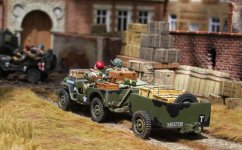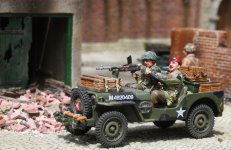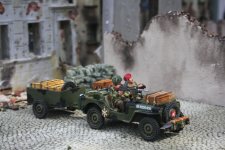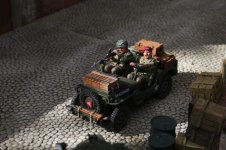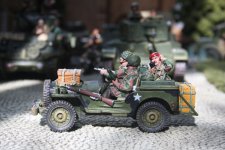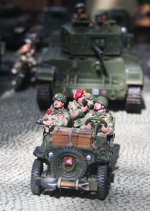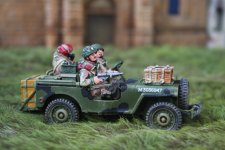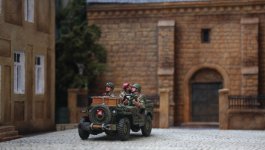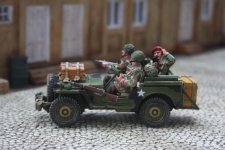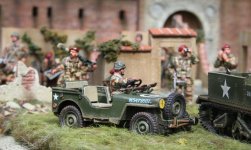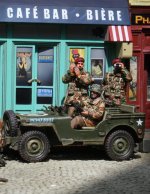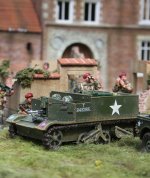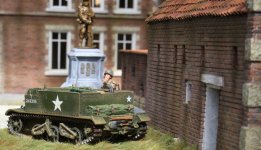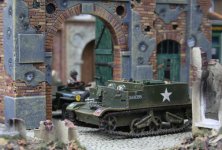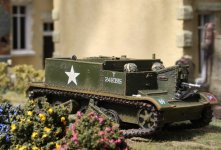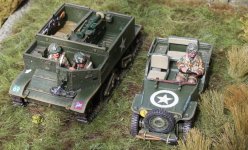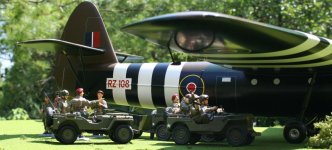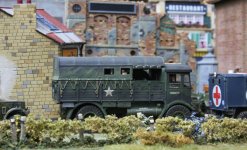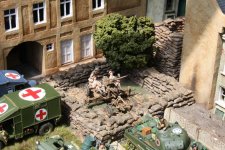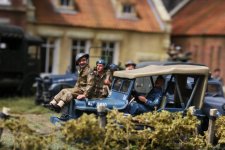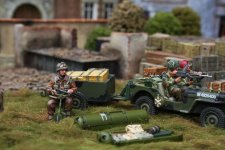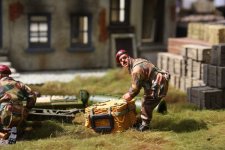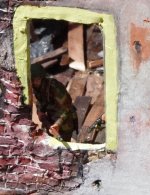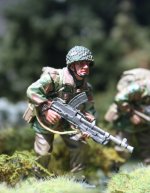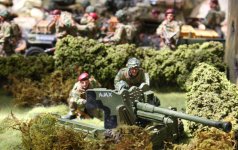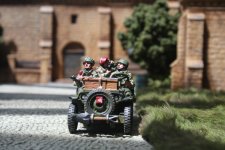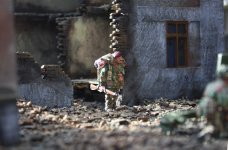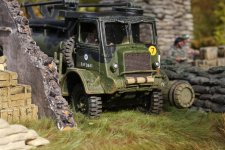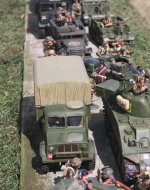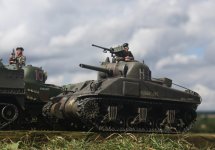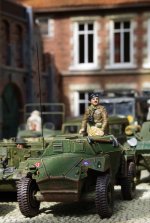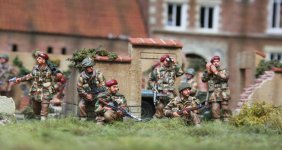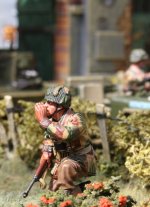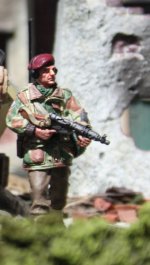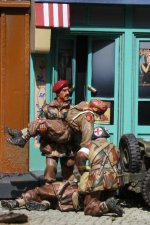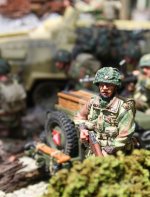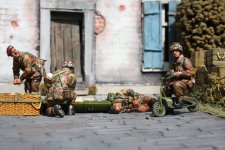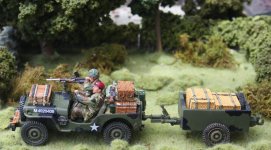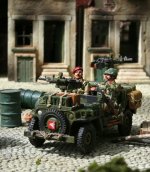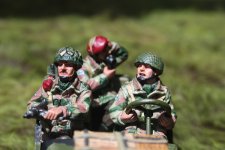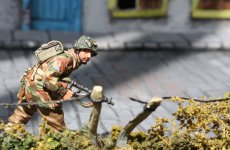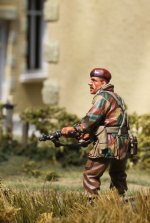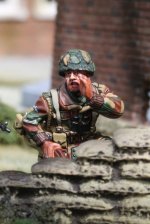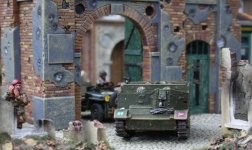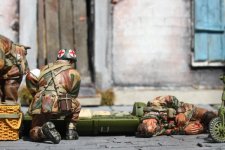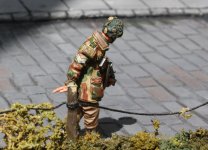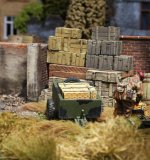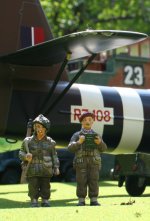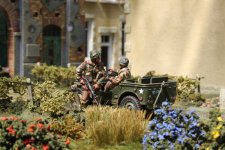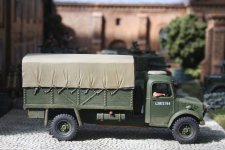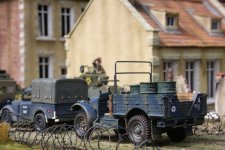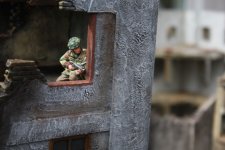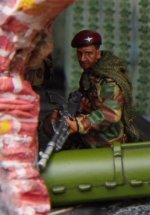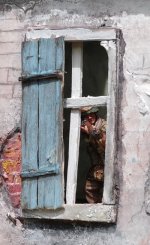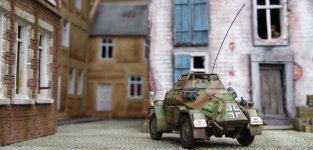panda1gen
Colonel
- Joined
- Jul 29, 2005
- Messages
- 8,132
ref: https://www.sagerssoldiers.com/mg001-reece-jeep-by-king-and-country-retired/
Product Description
MG001 “The Recce Jeep”
A two-man set sitting in a very well-armed jeep… a pair of twin Lewis guns plus a Bren gun and a whole host of fuel, ammo and supplies make this particular jeep set a “must-have”. An additional feature of all of these new “ARNHEM” sets is that each paratrooper is actually “named”. Manning this recce jeep are… (driver) Lance Corporal Tony Neville and (gunner) Sergeant Jack Edwards.
“OPERATION MARKET GARDEN”
At last, the much-anticipated new British Paras are about to “descend from the heavens” and land into the hell that was the little Dutch town called… ARNHEM… in September 1944.
Immortalized in the book and then the movie, “A Bridge Too Far”, K&C proudly and defiantly returns and improves on our first big World War Two Success — “ARNHEM’44”.
That series was the very first major toy soldier range to introduce, what has now become, the “industry standard” — the Matt-painted toy soldier accompanied by a wide variety of scale model fighting vehicles.
Other Details
Release Date:November 2007
Retired Date ecember 2009
ecember 2009
I covered the history of the reconnaissance squadron earlier, and how they were mainly blocked from reaching Arnhem Bridge. I also covered Maj Gough's story. I have enjoyed taking pictures of these MG series jeeps. More to come before I get back to the history.

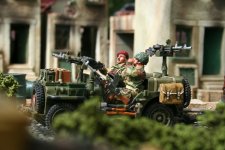
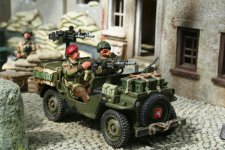
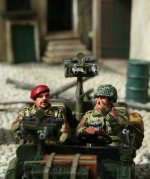
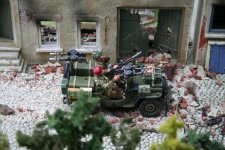
Product Description
MG001 “The Recce Jeep”
A two-man set sitting in a very well-armed jeep… a pair of twin Lewis guns plus a Bren gun and a whole host of fuel, ammo and supplies make this particular jeep set a “must-have”. An additional feature of all of these new “ARNHEM” sets is that each paratrooper is actually “named”. Manning this recce jeep are… (driver) Lance Corporal Tony Neville and (gunner) Sergeant Jack Edwards.
“OPERATION MARKET GARDEN”
At last, the much-anticipated new British Paras are about to “descend from the heavens” and land into the hell that was the little Dutch town called… ARNHEM… in September 1944.
Immortalized in the book and then the movie, “A Bridge Too Far”, K&C proudly and defiantly returns and improves on our first big World War Two Success — “ARNHEM’44”.
That series was the very first major toy soldier range to introduce, what has now become, the “industry standard” — the Matt-painted toy soldier accompanied by a wide variety of scale model fighting vehicles.
Other Details
Release Date:November 2007
Retired Date
I covered the history of the reconnaissance squadron earlier, and how they were mainly blocked from reaching Arnhem Bridge. I also covered Maj Gough's story. I have enjoyed taking pictures of these MG series jeeps. More to come before I get back to the history.







